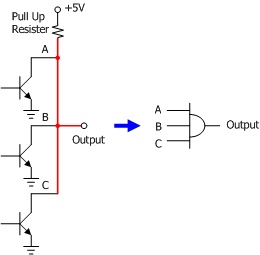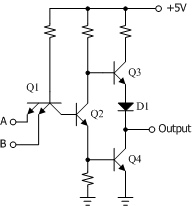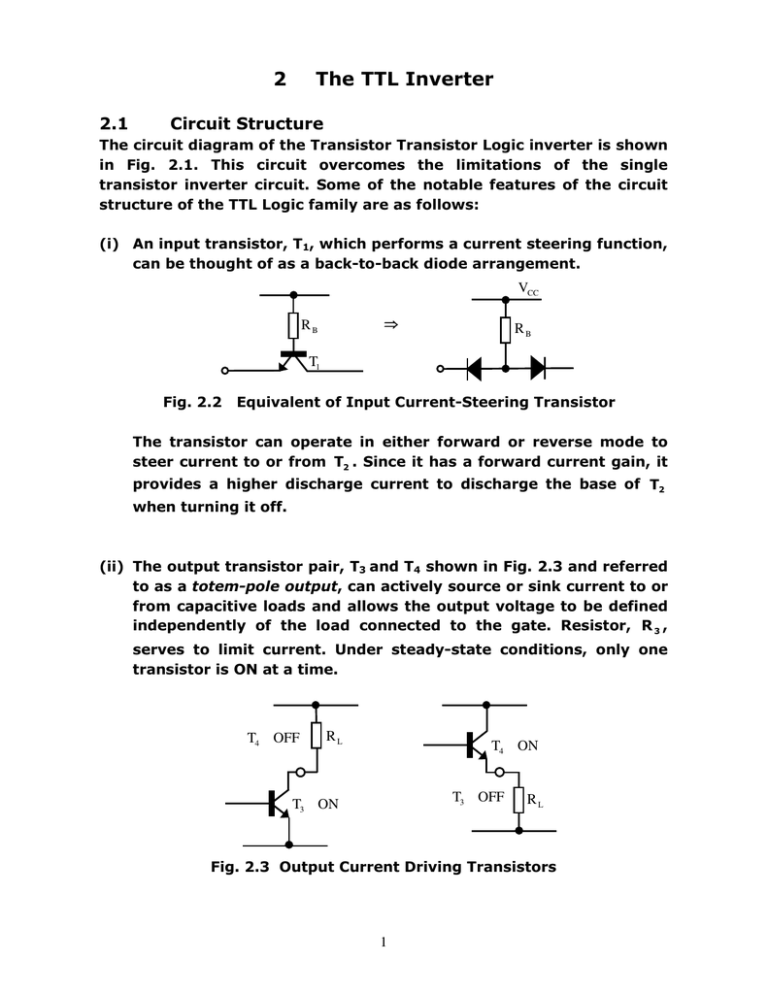

CMOS transistors are voltage operated.Ī buffer is designed to drive multiple inputs on other gates. Bipolar transistors are current operated devices. When the output switches to ground we call this "sinking" the Current. When an output switches to Vcc or the power supply we call this "sourcing" the current. The 74LS06 is inverting, the 74LS07 is non-inverting. An example is TTL logic can connect to higher voltage CMOS logic. This can be used to connect to higher voltage loads to the 5 volts Vcc of the device.

See 74LS06 Hex Inverters Open Collector 30-Volts. It requires an external load and can only switch to ground. If the output is low the bottom transistor switches on to ground.Ĭontrast this with 74LS06 also an inverter but has an open collector output. If the output is HIGH the upper transistor was switch ON to connect to Vcc. Most of the integrate circuits I'll like the 74LS04 above uses totem pole outputs to save power. See CD4001 Internal Diagram.Īn inverter simply changes a HIGH to LOW or a LOW to a HIGH. Compare the above with a typical CD4XXX type gate. These are TTL or transistor-transistor logic. See for example the 74LS04 Hex Inverters. They have been around for decades and operate at 5 volts.
#What is totem pole output series
In my tutorials I'll be using the 74LSXX series of digital circuits.

A 74HC14 operates at 55 nanoseconds at 2 volts and 11 nanoseconds at 6 volts. A 74LS14 HEX Schmitt trigger inverter operates at 15 nano seconds. Nanoseconds is 10 -9 second or 0.001 microsecond. 10 -3 is milliseconds or 1 / 1000 second. Often this means time delay from input to output reaction. Speed varies by voltage.ĬD4XXX is low power, slow. Power consumption is low.ħ4HCXX is fast, low power. Vcc is 5 volts.ħ4CXX are built from CMOS not bipolar transistors. Vcc is 5 volts.ħ4LSXX are much faster but still power hungry. a LOW or L is zero volts.ħ4XX is power hungry and slow response time. A HIGH or simply H is an electrical voltage of 3-15 volts depending on the logic family.


 0 kommentar(er)
0 kommentar(er)
